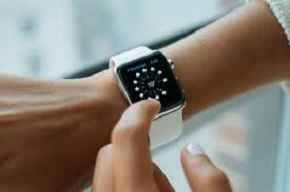Wearables and wellbeing in buildings
In October 2018, BSRIA launched a White Paper on ‘Wearables and wellbeing in buildings - the story so far’.
The general consensus emerging from the White Paper is that, while there is substantial potential for the deployment of wearables, there are also significant technical, social and legal challenges.
It is also clear that there is little evidence of any practical solutions linking wearables to HVAC or building systems in general that are already in operation, apart from in niche areas such as wearable security fobs.
The paper looks at the kinds of wearable technologies currently available and at what needs to happen to bring viable solutions to market that link wearables and building systems in a useful way.
A wearable is taken to be an article, a device or an item of clothing which can be worn by a human, or possibly carried as an implant, which has a degree of intelligence built into it and can potentially communicate with the Internet of Things (IoT), either directly or indirectly – for example, via a Bluetooth connection to a smart phone. Animals can also wear devices or carry implants which could in some cases be relevant to building management, for example, in the case of an assistance dog or guide dog.
Examples include: smart watches, which can record various metrics of the wearer’s health and behaviour, smart glasses that can provide visual imagery, smart clothing, which can provide heating, enhanced visibility or greater sensitivity, smart hearing aids and even smart jewellery, which can, for example, issue alerts to the wearer.
Henry Lawson, BSRIA’s Senior Market Research Consultant, BSRIA’s World Market Intelligence Division said:
“At present, the practical applications of wearables are strongly focused on health and fitness, from the monitoring of basic health metrics such as exercise taken and heart rates, through to the tracking of specific and sometimes serious medical problems. There is also some overlap between health and ‘leisure’ with goals such as relaxation.
"There is growing evidence to support the common sense view that people who are healthier and happier are likely to be more productive and that this can feed into a positive financial return. There is also evidence that buildings can affect wellbeing positively or negatively both through their design and through the functionality and efficiency of the systems running to heat, cool and ventilate and light the building.
“There needs to be a means of collecting, calibrating and analysing data from a lot of different wearable devices. This immediately raises issues of consent, privacy and data security, as data relating to physical health is likely to be highly sensitive and data relating to mental states even more so. People in buildings, whether employees, customers or visitors, need a motive to share their data.
"Ironically, when it comes to emerging technology of this kind, one thing that the past has taught us is that some of the most important and far reaching applications for wearables, both inside and outside buildings, are likely to be ones that we have not even thought of yet.”
‘Wearables & wellbeing in buildings – the story so far’ White Paper published in 2018 is available (as a free copy) in combination with the purchase of additional BSRIA studies. It is a sequel to the BSRIA White Paper 'Trends towards wearables and wellbeing in buildings – a threat or opportunity for the HVAC industry?' published in 2017.
You can access the report at: https://www.bsria.co.uk/accounts/register/?file=wp8-2018-wearables-and-wellbeing-in-buildings.pdf
This article was originally published here by BSRIA on 18 October 2018.
--BSRIA
[edit] Related articles on Designing Buildings Wiki
Featured articles and news
CIOB report; a blueprint for SDGs and the built environment
Pairing the Sustainable Development Goals with projects.
Latest Build UK Building Safety Regime explainer published
Key elements in one short, now updated document.
UKGBC launch the UK Climate Resilience Roadmap
First guidance of its kind on direct climate impacts for the built environment and how it can adapt.
CLC Health, Safety and Wellbeing Strategy 2025
Launched by the Minister for Industry to look at fatalities on site, improving mental health and other issues.
One of the most impressive Victorian architects. Book review.
Common Assessment Standard now with building safety
New CAS update now includes mandatory building safety questions.
RTPI leader to become new CIOB Chief Executive Officer
Dr Victoria Hills MRTPI, FICE to take over after Caroline Gumble’s departure.
Social and affordable housing, a long term plan for delivery
The “Delivering a Decade of Renewal for Social and Affordable Housing” strategy sets out future path.
A change to adoptive architecture
Effects of global weather warming on architectural detailing, material choice and human interaction.
The proposed publicly owned and backed subsidiary of Homes England, to facilitate new homes.
How big is the problem and what can we do to mitigate the effects?
Overheating guidance and tools for building designers
A number of cool guides to help with the heat.
The UK's Modern Industrial Strategy: A 10 year plan
Previous consultation criticism, current key elements and general support with some persisting reservations.
Building Safety Regulator reforms
New roles, new staff and a new fast track service pave the way for a single construction regulator.
Architectural Technologist CPDs and Communications
CIAT CPD… and how you can do it!
Cooling centres and cool spaces
Managing extreme heat in cities by directing the public to places for heat stress relief and water sources.
Winter gardens: A brief history and warm variations
Extending the season with glass in different forms and terms.
Restoring Great Yarmouth's Winter Gardens
Transforming one of the least sustainable constructions imaginable.

























